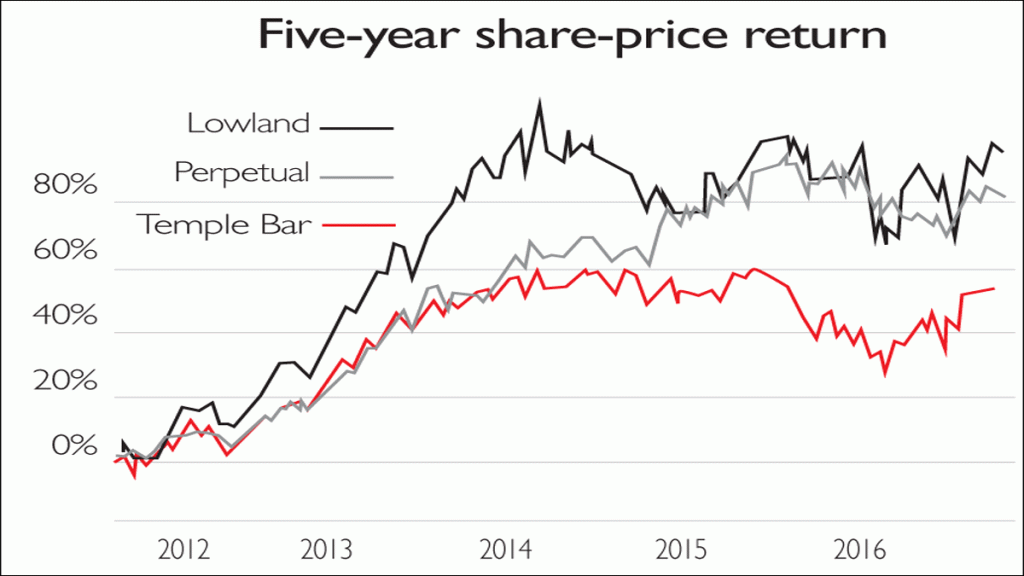
With interest rates in the UK almost zero and gilts with ten years to run yielding under 1%, investors are chasing after income wherever they can find it. Surprisingly, though, investment trusts specialising in UK equity income and managed by some of the most highly regarded managers are trading on reasonable discounts to asset value.
In recent years, Lowland (LSE: LWI), Temple Bar (LSE: TMPL) and Perpetual Income And Growth (LSE: PLI) have usually traded at premiums, enabling their boards to grow the funds by issuing new shares to investors at above net asset value. Now, they trade on discounts of 8%, 9% and 8% respectively, despite strong records; their five-year net asset value returns to the end of August have been 91%, 76% and 99%, compared with 58% for the FTSE All-Share.
The current discounts may be in response to dull one-year records, but the performances of Temple Bar and Lowland have picked up strongly in the last six months, while Perpetual has the better long-term record. The historic dividend yields on the three trusts are 3.6%, 3.3% and 3.4%, compared with an All-Share yield of 3.5%, but their dividend paying ability is helped by the partial capitalisation of costs.
Total ongoing charges of just 0.5%, 0.6% and 0.65% respectively help to explain why the three trusts perform markedly better than comparable open-ended funds run by the same managers. Compound dividend growth over five years has been 3%, 8.7% and 9.8% respectively.
Alastair Mundy, Temple Bar’s manager, was one of the few investors to warn in late 2015 that markets were highly valued. At the year end, Temple Bar’s fixed borrowings were matched by holdings of gilts, cash and gold, enabling Mundy to take advantage of market weakness early in 2016 to top up equity holdings. He is an outspoken advocate of value investing.
A list of holdings topped by Glaxo, HSBC, Shell and BP shows a distinct bias to large and mega-caps. On the negative side, investing in mega-caps since 2000 has been a triumph of hope over experience and, with the exception of gold, there are actually few signs of the “contrarian” investment in recovery stocks for which Mundy is well known.
Neil Woodford’s departure from Invesco left Perpetual’s manager Mark Barnett running a huge range of funds. Arguably, Barnett is the better manager, but overstretch is a worry. However, he has brought a former colleague, John Richards, out of retirement as product director, leaving him free to focus on investment.
Tobacco stocks account for three of the five largest holdings, but the largest exposure (28%) is to financial services (though not to banks). The 18% in health care includes several high-risk, high-reward venture companies, but small-caps are just 10% of the portfolio. Less than half the portfolio is in members of the FTSE 100.
Lowland’s manager, James Henderson, also has less than half his portfolio in the FTSE 100. Given that the FTSE 250, representing the UK’s mid-cap companies, has nearly trebled relative to the FTSE 100 since the start of the millennium, focusing on smaller stocks has been a great way to outperform.
The sector composition of Lowland is very different from Perpetual, with over 25% in industrials and nearly 20% in resources compared with 14% and under 5%. Under 10% is in pharmaceuticals and health care. Debt relative to net assets, which will enhance returns in a rising market, is 12% compared with 19% at Perpetual and 7% at Temple Bar.
So which is the best fund to invest in? If you can afford it and don’t mind the proliferation of holdings, buy all three. Otherwise, toss a three-sided coin.